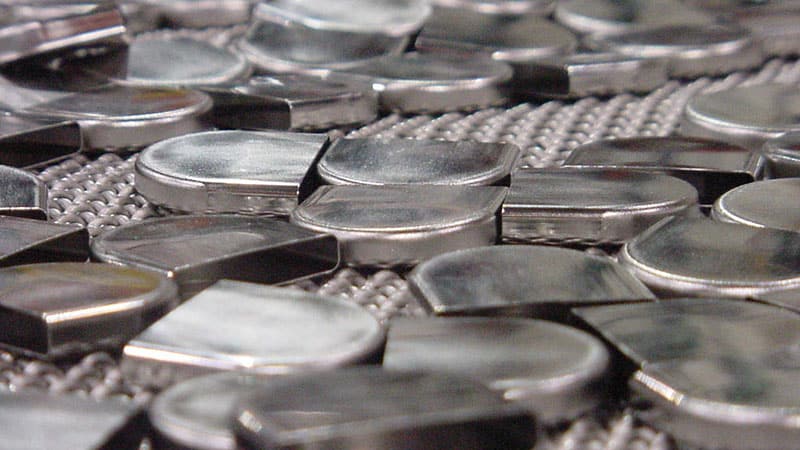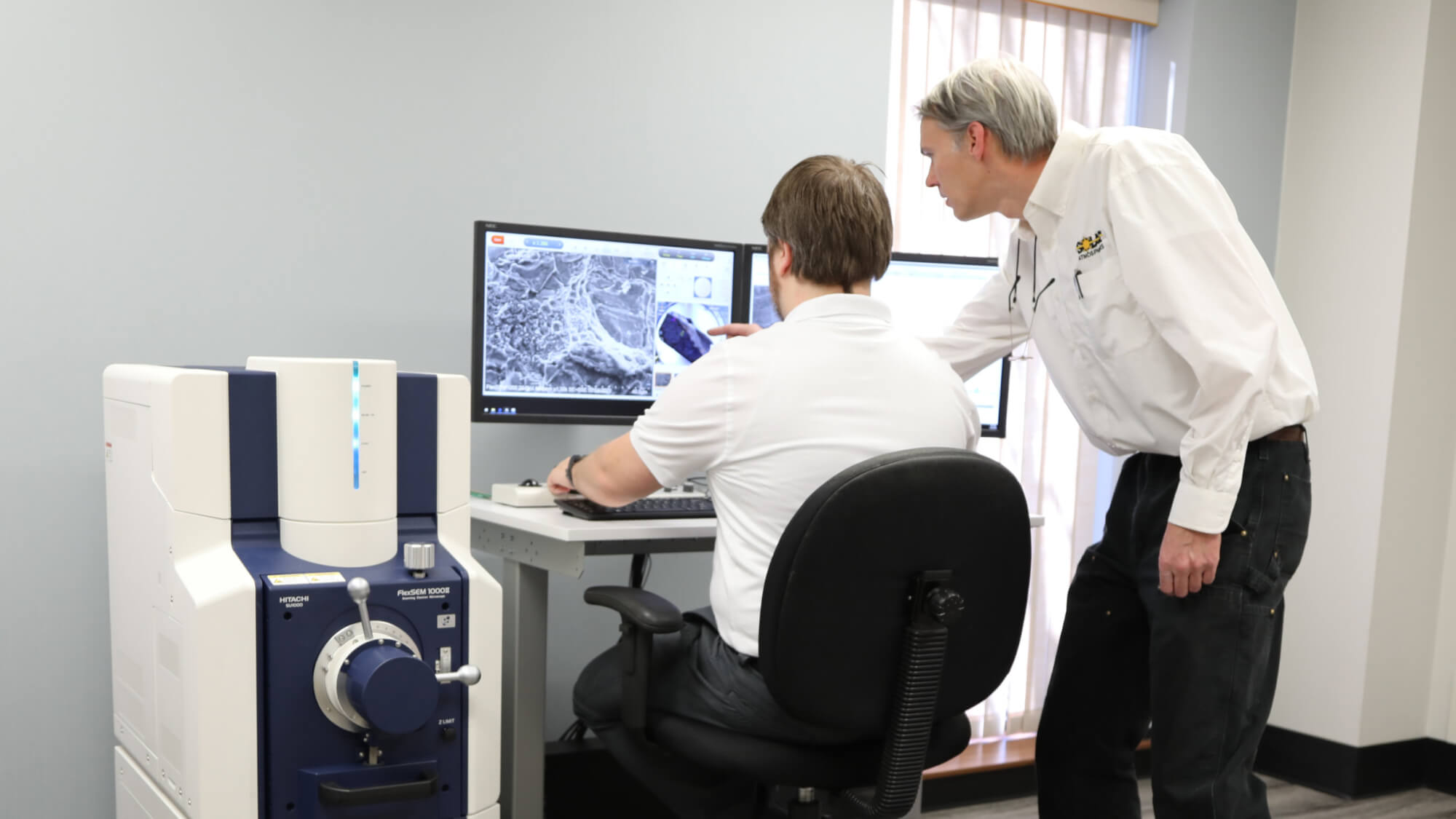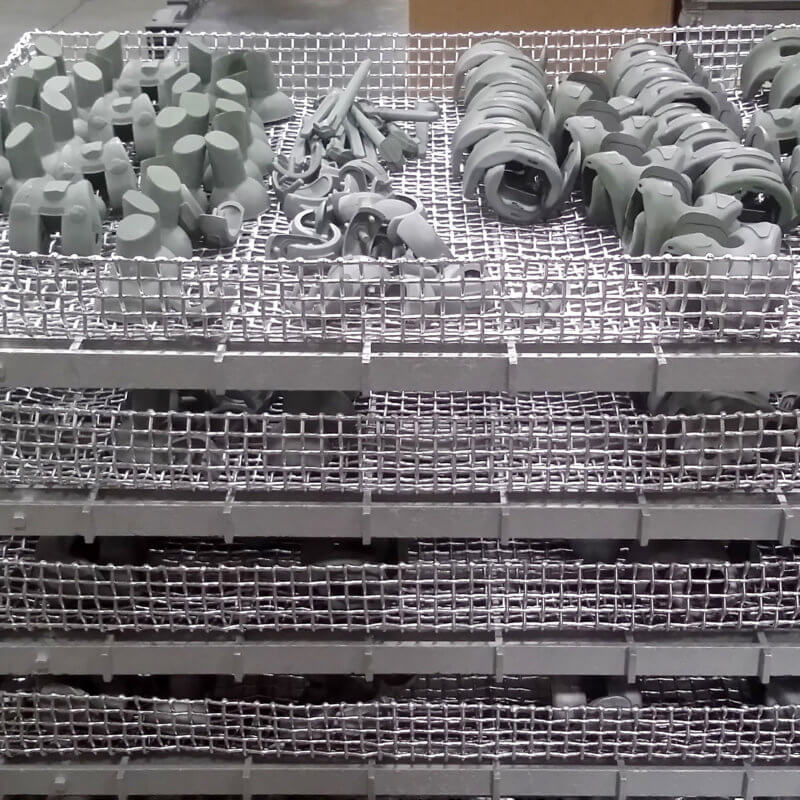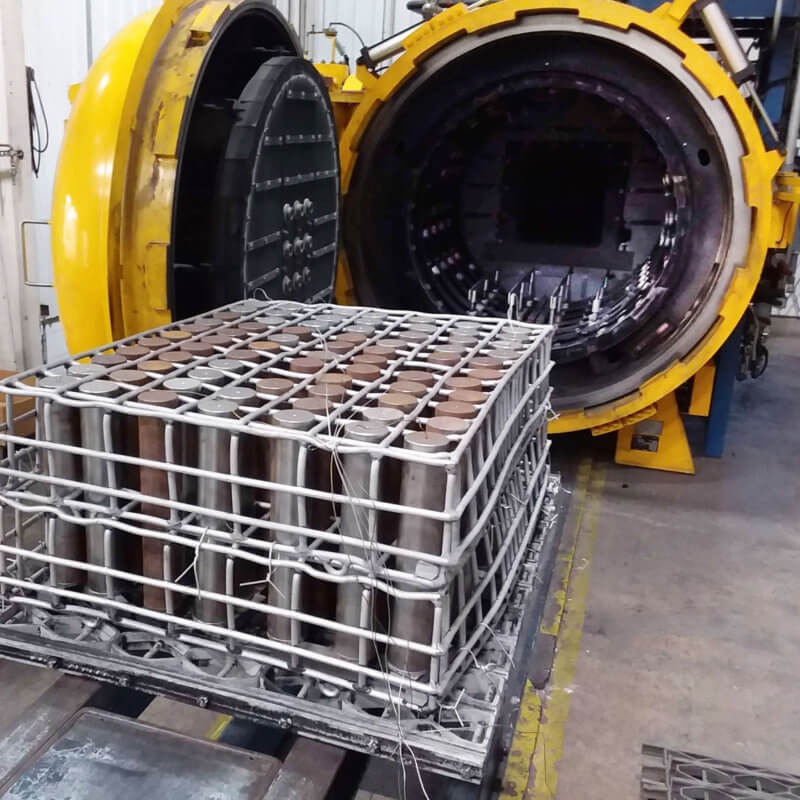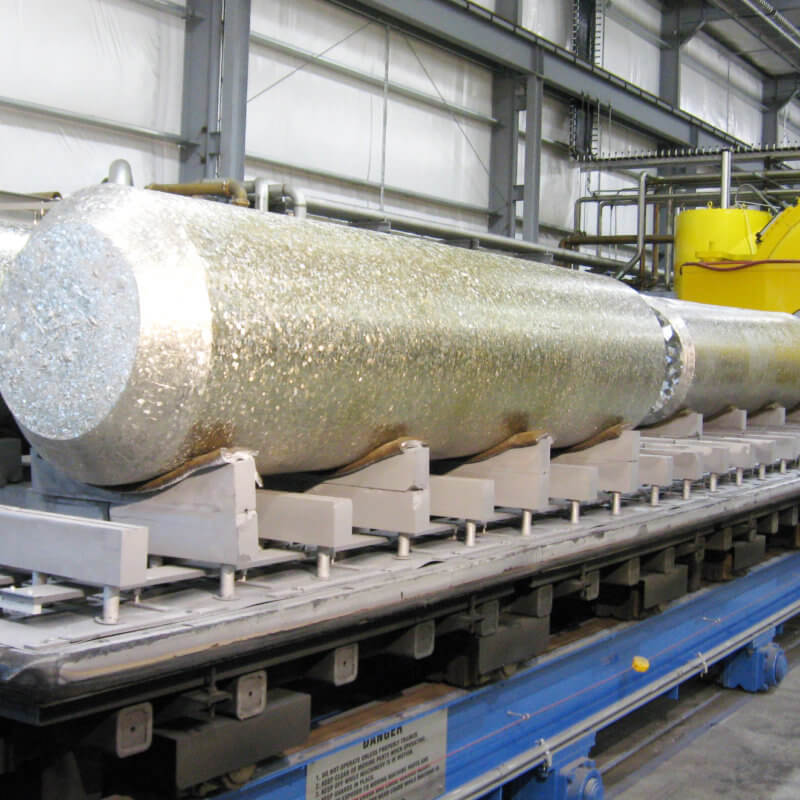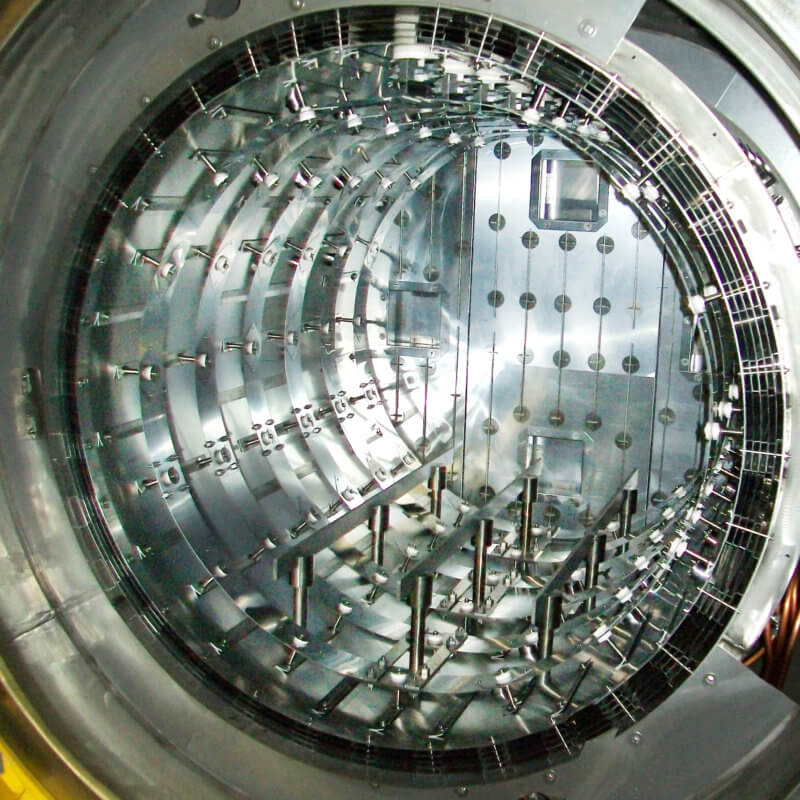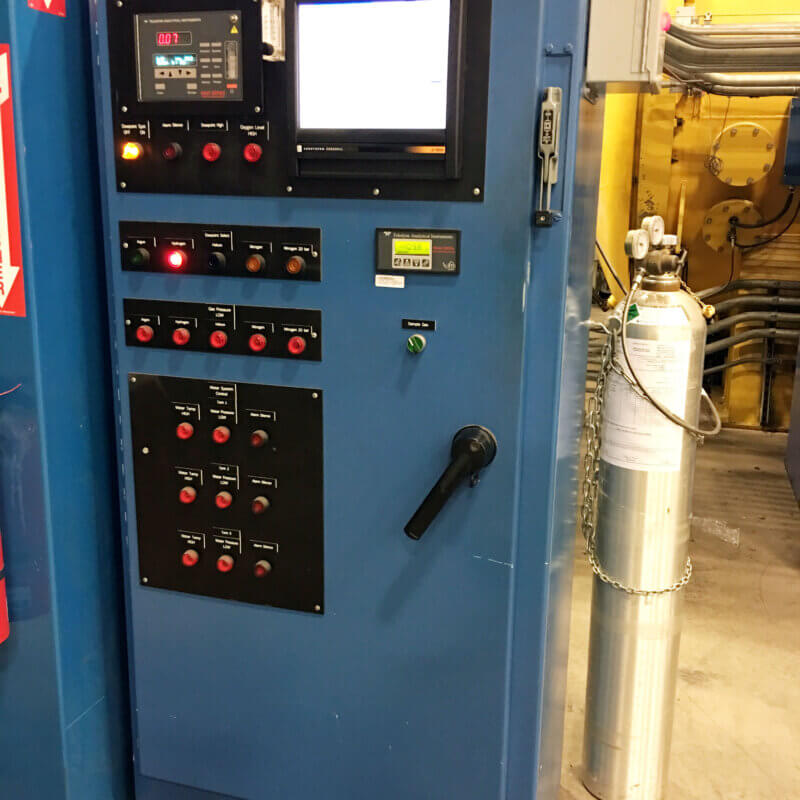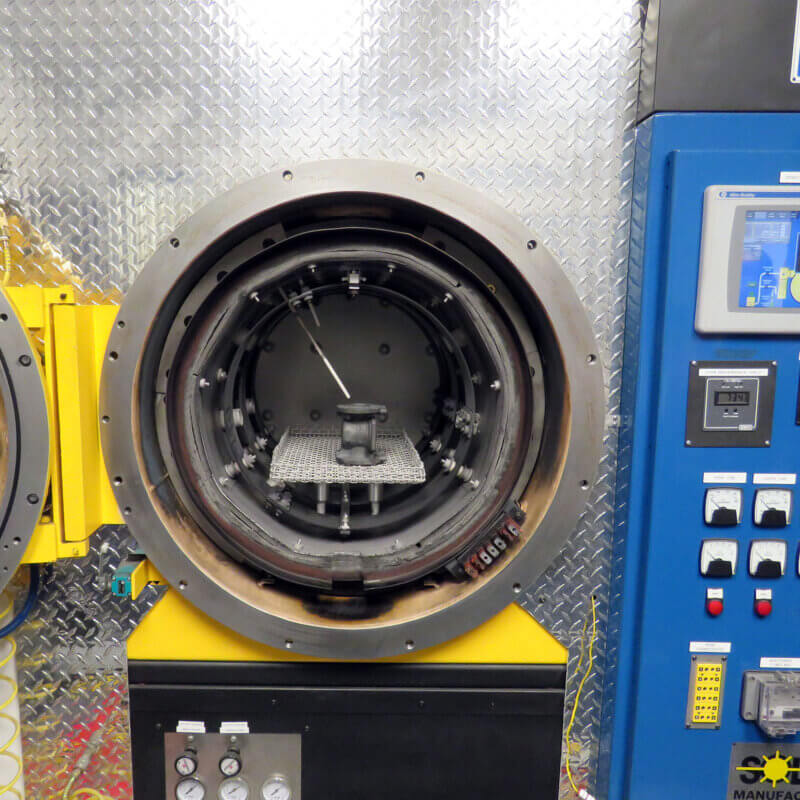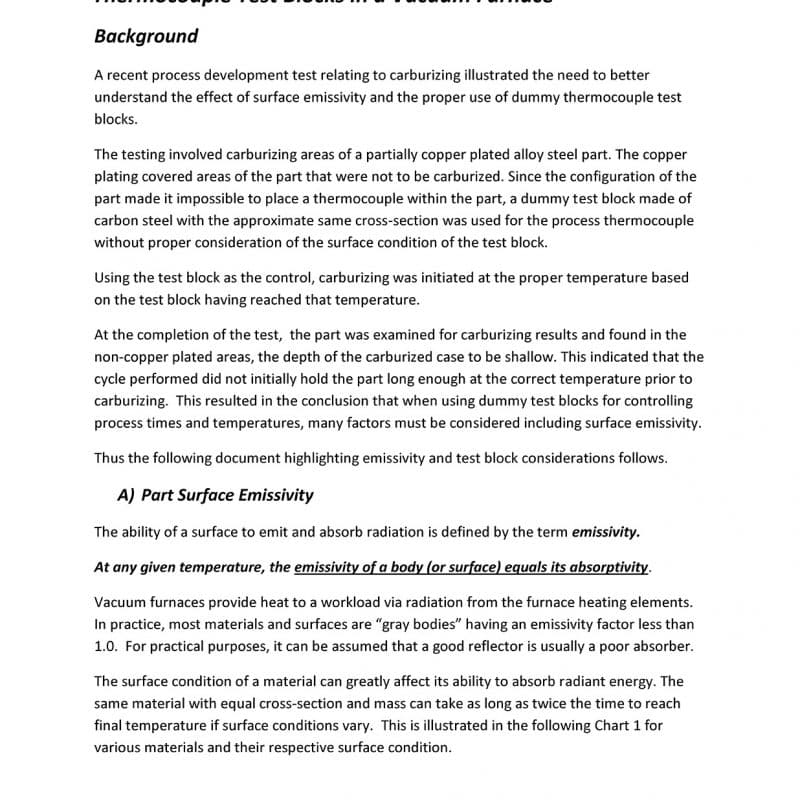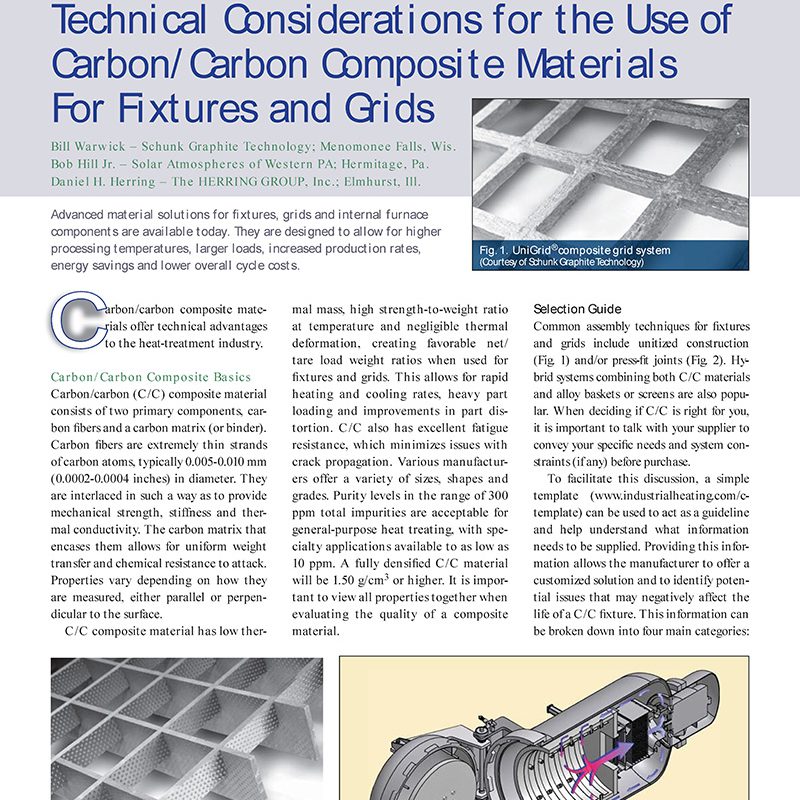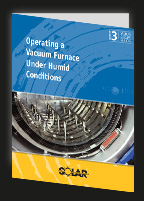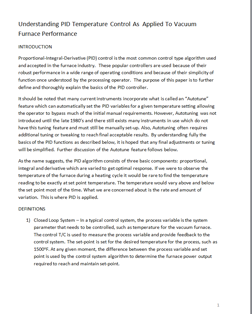CALL: 1-855-WE-HEAT-IT
Furnace Operation
Preventing Eutectic Reactions and Diffusion Bonding in Vacuum Processing
The purpose of this paper is to explain reactions that can occur during a vacuum processing cycle and different methods of preventing these reactions.
Vacuum Gas Cooling – Is Pressure or Velocity Most Important? (Part 1)
There is an age-old adage that exists in the heat treating world. That supposition states that “the smaller the vacuum furnace, the faster it will quench.” Our study compared the cooling rates of two distinctly sized High Pressure Gas Quenching (HPGQ) vacuum furnaces- a large 10-bar vacuum furnace equipped with a 600 HP blower motor versus a smaller 10-bar vacuum furnace equipped with a 300 HP motor.
The Use of Graphite for Vacuum Furnace Fixturing
The vacuum furnace industry has searched for many years for the ideal material to be used in fixtures and grids for processing workloads at elevated temperatures. The support structures should be lightweight to achieve desired metallurgical results during the cooling phase of the process cycle.
The Returning Need For the All-Metal Vacuum Furnace Hot Zone and Specific Application Advantages
In this article, we will highlight some of the essential design requirements needed to provide the proper all-metal furnace for these critical applications.
Dew Point Versus Oxygen Content in Vacuum Processing Part 2
Since the majority of commercial and captive heat treat facilities do not typically operate under controlled environments, the temperature and humidity swings can often be drastic.
Dew Point Versus Oxygen Content In Vacuum Processing
It is well known that accurate measurement of any heat treating atmosphere can have a significant effect on the quality and process yield of heat treated components. Traditionally, dew point analysis has always been the bellwether in determining our heat treating atmospheric conditions.
Understanding Emissivity and Thermocouple Test Blocks
A recent process development test relating to carburizing illustrated the need to better understand the effect of surface emissivity and the proper use of dummy thermocouple test blocks. The testing involved carburizing areas of a partially copper plated alloy steel part. The copper plating covered areas of the part that were not to be carburized. Since the configuration of the part made it impossible to place a thermocouple within the part, a dummy test block made of carbon steel with the approximate same cross-section was used for the process thermocouple without proper consideration of the surface condition of the test block. Using the test block as the control, carburizing was initiated at the proper temperature based on the test block having reached that temperature. At the completion of the test, the part was examined for carburizing results and found in the non-copper plated areas, the depth of the carburized case to be shallow. This indicated that the cycle performed did not initially hold the part long enough at the correct temperature prior to carburizing. This resulted in the conclusion that when using dummy test blocks for controlling process times and temperatures, many factors must be considered including surface emissivity.
Technical Considerations for the Use of Carbon and Carbon Composite Materials for Fixtures and Grids
Advanced material solutions for fixtures, grids and internal furnace components are available today. They are designed to allow for higher processing temperatures, larger loads, increased production rates, energy savings, and lower overall cycle costs.
Operating A Vacuum Furnace Under Humid Conditions
A specific concern to a vacuum furnace user is processing critical work during summer months with high temperatures and high humidity. This same concern could also be a problem on rainy winter months. Under these difficult conditions, it is most important to understand the impact that humid conditions can have on the final surface condition and appearance of the processed parts. Work discolored or oxidized by residual water vapor is unacceptable and must be controlled for many critical components like aerospace parts or medical implants and instruments. This paper will try to explain factors relating to humidity, air temperature, and methods to improve final product appearance and minimize possibility of contamination.
Understanding PID Temperature Control As Applied To Vacuum Furnace Performance
Proportional-Integral-Derivative (PID) control is the most common control type algorithm used and accepted in the furnace industry. These popular controllers are used because of their robust performance in a wide range of operating conditions and because of their simplicity of function once understood by the processing operator. The purpose of this paper is to further define and thoroughly explain the basics of the PID controller. It should be noted that many current instruments incorporate what is called an “Autotune” feature which can automatically set the PID variables for a given temperature setting allowing the operator to bypass much of the initial manual requirements. However, Autotuning was not introduced until the late 1980’s and there still exists many instruments in use which do not have this tuning feature and must still be manually set-up. Also, Autotuning often requires additional tuning or tweaking to reach final acceptable results. By understanding fully the basics of the PID functions as described below, it is hoped that any final adjustments or tuning will be simplified. Further discussion of the Autotune feature follows below. As the name suggests, the PID algorithm consists of three basic components: proportional, integral and derivative which are varied to get optimal response. If we were to observe the temperature of the furnace during a heating cycle it would be rare to find the temperature reading to be exactly at set point temperature. The temperature would vary above and below the set point most of the time. What we are concerned about is the rate and amount of variation. This is where PID is applied.

